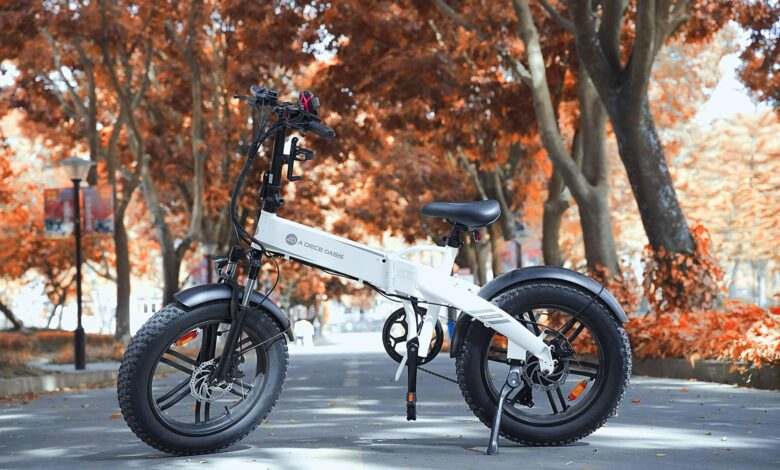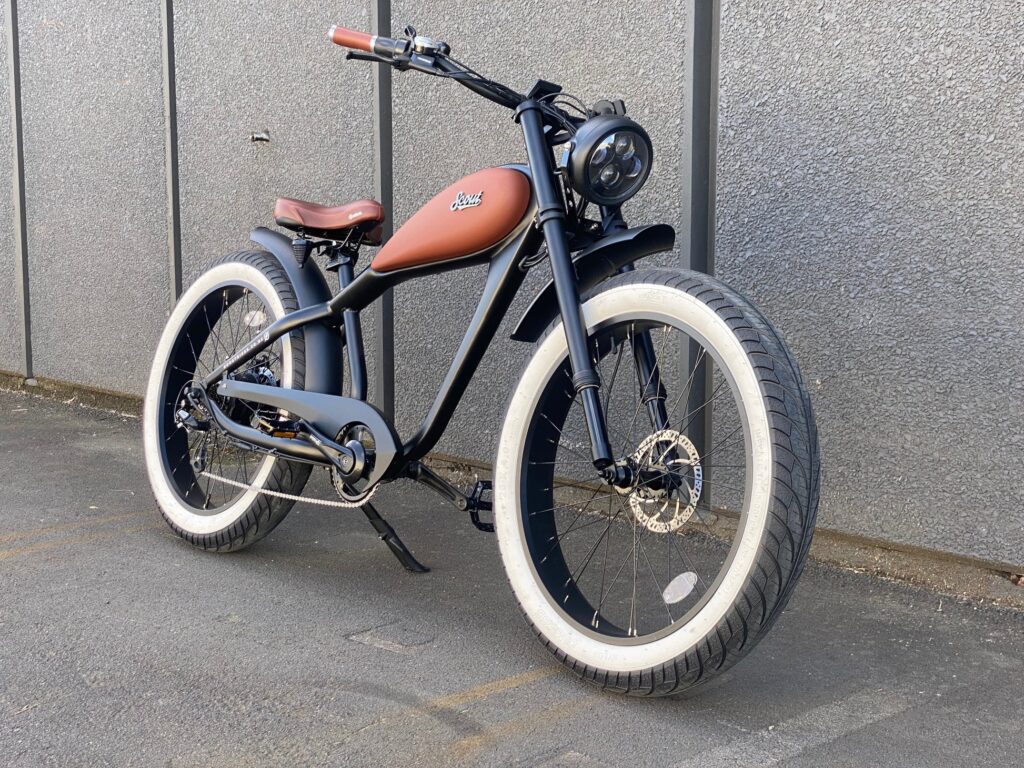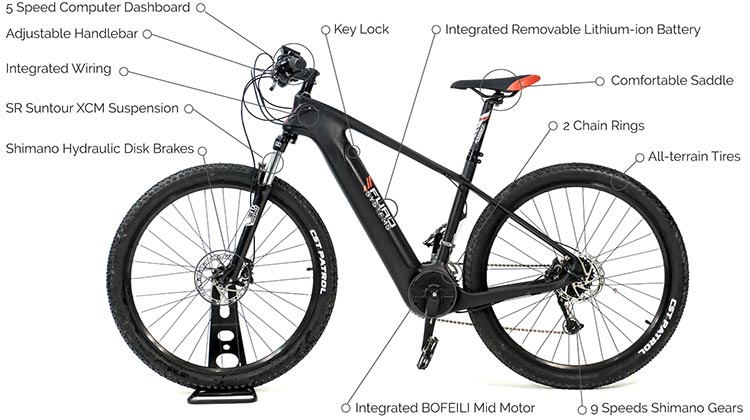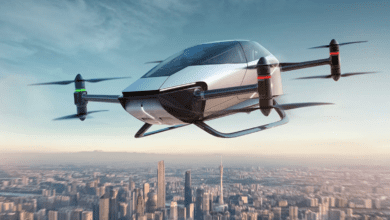Build a More Efficient E-Bike: Enhance Your Electric Cycling Experience


In recent years, electric bikes, have gained significant popularity among commuters and outdoor enthusiasts alike. These two-wheeled wonders offer an efficient and eco-friendly alternative to traditional bicycles and automobiles. However, as technology continues to advance, so does the potential to build a more efficient e-bike. In this article, we will explore various ways to enhance the performance, range, and overall experience of e-bikes, catering to both new riders and seasoned cyclists.
Embracing the Electric Revolution
In today’s world, where environmental sustainability and energy efficiency are paramount concerns, the electric bike, or e-bike, has emerged as a popular mode of eco-friendly transportation. With the rise in urbanization and the need for greener commuting options, e-bikes have captured the imagination of millions of people worldwide. However, to truly unlock the full potential of these electric wonders just like some of the futuristic gadgets, one must delve into the realm of efficiency and optimization. In this comprehensive guide, we will explore the steps to build a more efficient e-bike that not only enhances performance but also contributes to a cleaner and healthier planet.
Understanding E-Bike Efficiency: The Key to Unlocking Performance
To embark on the journey of building a more efficient e-bike, it is vital to grasp the concept of efficiency and its impact on overall performance. Efficiency in an electric bike refers to the ability to convert electrical energy from the battery into mechanical energy, propelling the bike forward with minimal energy loss. By optimizing efficiency, riders can enjoy an extended range, increased speed, and reduced environmental impact. So, let’s delve deeper into the factors that contribute to e-bike efficiency.


1. The Power of the Battery: Embrace Advanced Battery Technology
Selecting the Right Battery
E-bike efficiency starts with the battery. Choosing the right battery is crucial for maximizing the bike’s range and performance. Lithium-ion batteries are the most common and offer a good balance of energy density, weight, and lifespan. Consider the battery’s voltage, capacity, and mounting options to find the perfect match for your bike.
Investing in High-Capacity Batteries
Investing in high-capacity batteries provides a longer riding range and reduces the need for frequent recharging. Opt for batteries with higher Amp-hour (Ah) ratings to unlock longer cycling adventures.
Integrating Solar-Powered Charging
Embrace the power of the sun by integrating solar-powered charging systems into your e-bike. This innovative feature can extend your range, reduce dependency on external power sources, and make your e-bike even more sustainable.
2. Lightweight Frame and Components: Pave the Way for Efficiency
Choosing Lightweight Materials
A lighter e-bike frame and components translate to higher efficiency. Materials like aluminum, carbon fiber, and titanium offer strength without unnecessary weight, improving both speed and range.
Efficient Motor Integration
Carefully integrate the motor into the frame to ensure optimal weight distribution. A well-placed motor enhances balance and handling, providing a smooth and enjoyable ride.
Upgrading to Efficient Gearing Systems
Modern e-bikes often come equipped with advanced gearing systems. Consider upgrading to internal hub gears or electronically controlled systems to minimize energy loss and improve overall efficiency.


3. Aerodynamics: Reduce Resistance and Boost Speed
Streamlined Frame Design
Aerodynamics play a significant role in electric bike efficiency. A streamlined frame design reduces air resistance, allowing you to reach higher speeds with less effort.
Opt for Narrower Tires
Wider tires can create more rolling resistance. Opt for narrower tires with reduced tread patterns to improve efficiency, especially when cycling on smooth surfaces.
Utilize Wind Tunnel Testing
For serious cyclists and enthusiasts, wind tunnel testing can fine-tune the e-bike’s aerodynamics. Small adjustments in design can lead to substantial gains in efficiency.
4. Regenerative Braking Technology: Reclaim Energy on the Go
Understanding Regenerative Braking
Regenerative braking technology converts braking energy into electrical energy, which is stored back in the battery. This feature not only saves power but also extends the battery life.
Implementing Intelligent Braking Systems
Integrate intelligent braking systems that combine traditional friction brakes with regenerative braking. This setup ensures efficient energy recovery while maintaining optimal braking performance.
Customizing Braking Intensity
Allow users to customize the regenerative braking intensity to suit their riding style and terrain. This level of customization enhances the overall experience and user satisfaction.
Conclusion
Building a more efficient e-bike is a dynamic process that combines cutting-edge technology, thoughtful design, and a passion for sustainable transportation. By embracing advanced battery technology, lightweight materials, aerodynamics, and regenerative braking, cyclists can unlock a world of enhanced performance, longer ranges, and an eco-friendly commuting experience.
Building a more efficient electric bike is not only a testament to innovation and technology but also a step towards creating a more sustainable
FAQs
Q1: Are e-bikes suitable for daily commuting?
Absolutely! Electric bikes are an excellent option for daily commuting, providing a cost-effective, eco-friendly, and efficient means of transportation.
Q2: How fast can e-bikes go?
The speed of electric bikes depends on various factors, including local regulations and motor power. In many regions, e-bikes can reach speeds of up to 20-28 mph (32-45 km/h).
Q3: Can I ride an e-bike in the rain?
Yes, most electric bikes are designed to withstand light rain and moisture. However, it’s essential to take precautions and protect the electrical components from heavy downpours.
Q4: How often should I charge my e-bike battery?
The charging frequency depends on your riding habits and battery capacity. As a general rule, it’s recommended to charge the battery after each ride or when the charge level falls below 20-30%.
Q5: Are e-bikes suitable for off-road adventures?
Certainly! Many e-bikes are specifically designed for off-road riding, making them perfect companions for adventurous souls seeking thrilling outdoor experiences.




